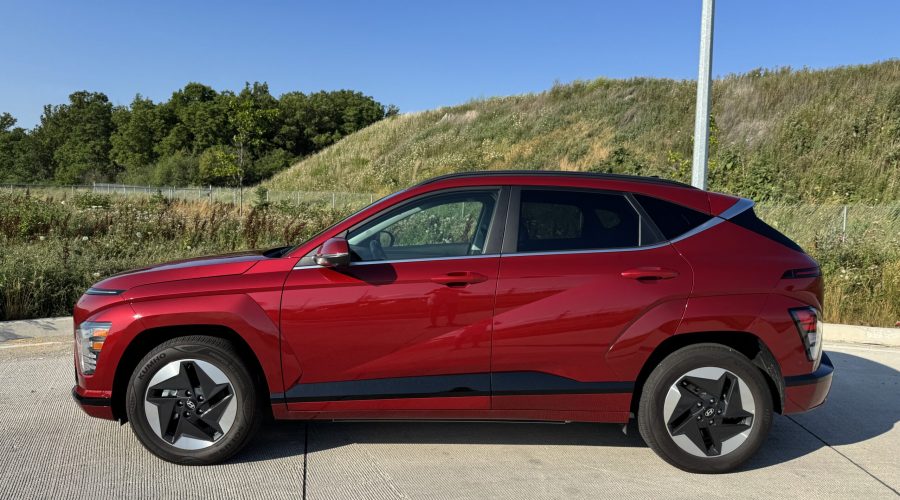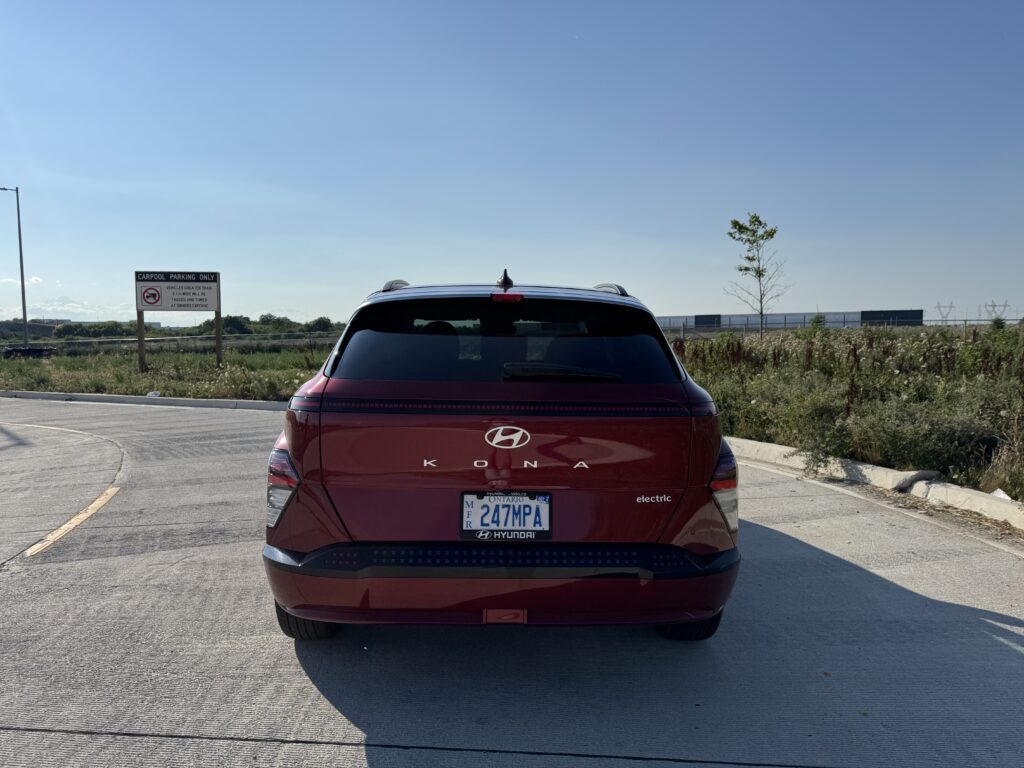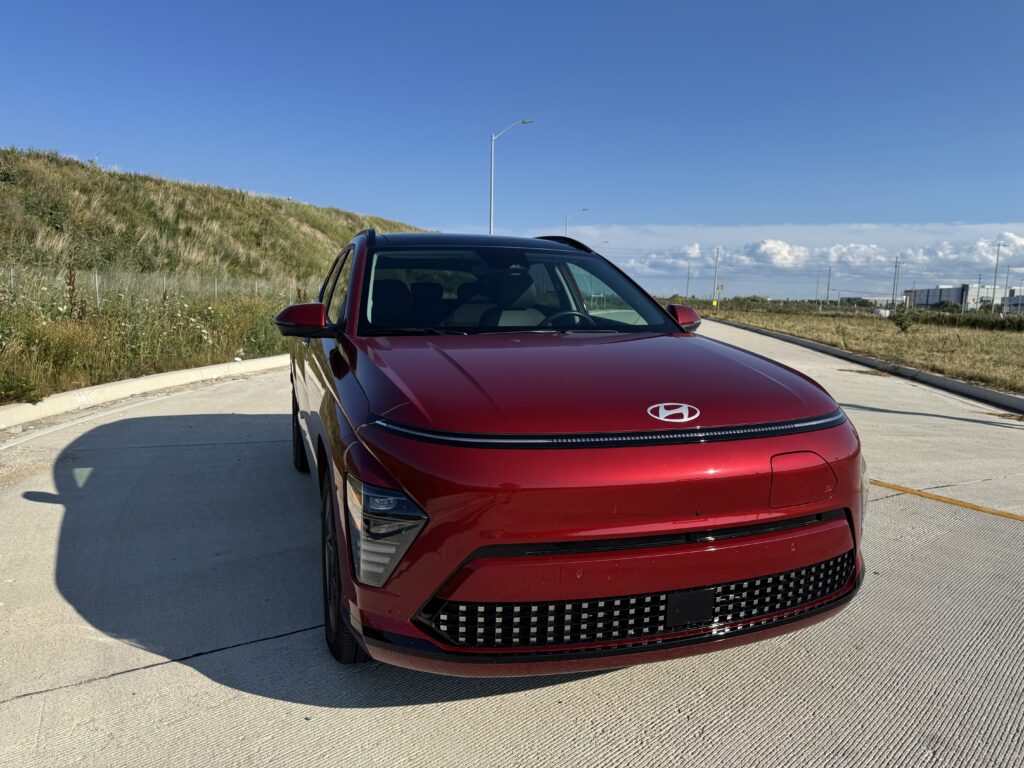It’s 2025, and yet many Canadians are still EV skeptics. Every auto manufacturer is racing to electrify, but walk into a hockey arena or coffee shop and bring up electric vehicles, and you’re still likely to hear the same nervous refrain: “What if I run out of charge?”
This anxiety is deep-seated, even irrational at times. I often ask folks: “When was the last time you ran out of gas in your ICE vehicle?” The answer is almost always “never.” So, why the fear with EVs — especially when today’s electric vehicles have smarter, more intuitive software than the average smartphone, all designed to steer you toward the next available charge station long before things get dire?
Enter the 2025 Hyundai Kona Electric, a subcompact EV crossover that may be the vehicle to finally break through some of this Canadian skepticism. I recently spent a week with the newest Kona Electric during an Ontario heatwave, and despite the punishing AC draw, the vehicle impressed me in more ways than one.
Let’s Talk Range (and the Real World)
First, the numbers: the 2025 Kona Electric boasts a 420 km range, which positions it comfortably in the sweet spot for daily commutes and weekend getaways alike. That is — of course — if the weather plays nice. My test drive occurred during a string of 30+ degree days, and while I didn’t have the Kona long enough to fully deplete the battery, the AC system was definitely working overtime. As with all EVs, extreme temperatures — hot or cold — will nibble away at your range. But let’s be fair: gas-powered vehicles don’t love those extremes either.
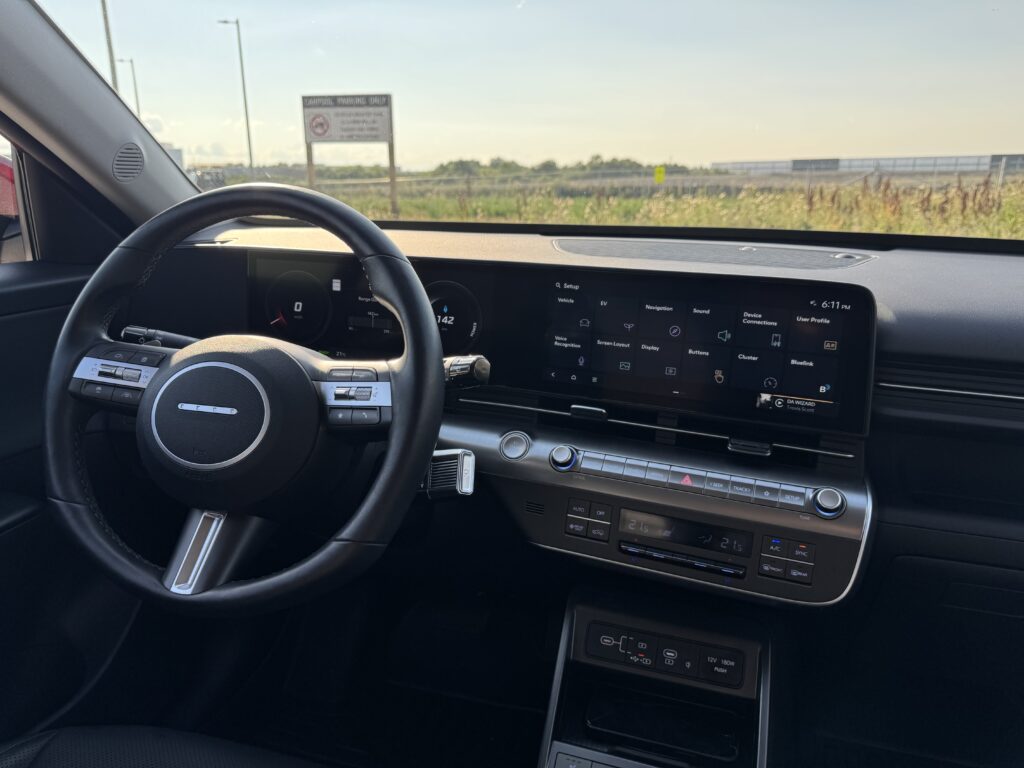
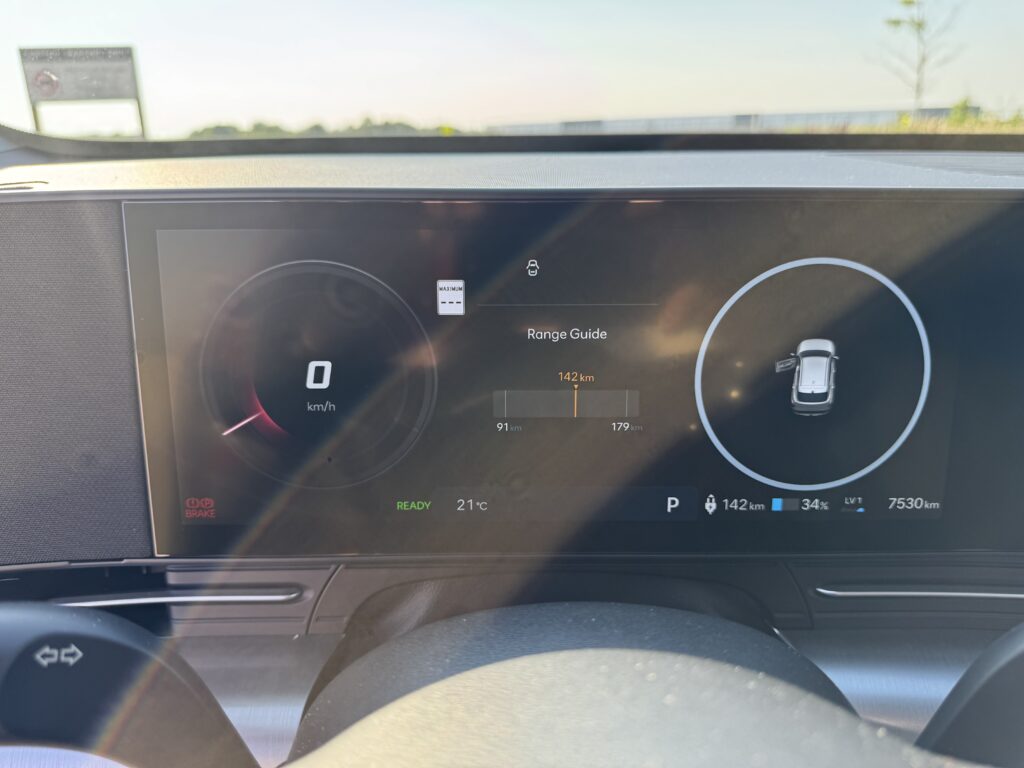
Charging? The Kona still can’t access Tesla Superchargers in Canada… yet. But that’s changing fast. Tesla’s Magic Dock rollout is already underway, and Hyundai has committed to providing NACS adapters — the final hurdle is timing and Canadian availability. In the meantime, you’ve got Electrify Canada, ChargePoint, FLO, and EV Fast stations — and plenty of them if you’re living in a metro area or along a well-travelled corridor.

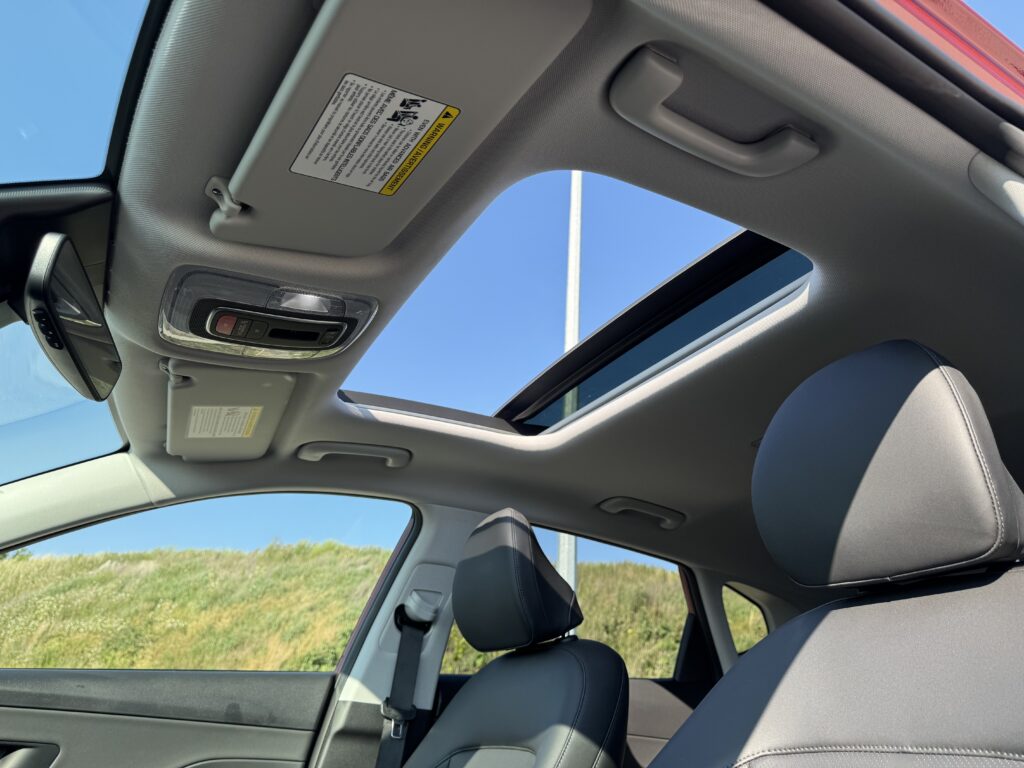
Styling: It Grew Into Itself
The 2025 Kona Electric looks more grown-up this time around. While I still can’t fully warm up to the boxy, hard-edged wheel openings — they just don’t do it for me stylistically — the overall body language is sharp, modern, and distinctive without being weird for the sake of weird.
The LED front light bar and matching rear treatment give it a futuristic, high-end vibe, and the front bumper-mounted charging port is both convenient and clever — unless, of course, you have a minor fender bender. Personally, I’d prefer the port off to the side to reduce the risk of collision-related damage.
Inside, the Kona Electric feels like a serious upgrade. Materials, textures, and design lines have matured. The new digital gauge cluster and infotainment display are crisp and intuitive — no YouTube tutorials required to figure out how to change a radio station or set climate control. Speaking of which, physical buttons for climate functions are a welcome change. Not everything needs to be buried in a touchscreen, and Hyundai clearly gets that.
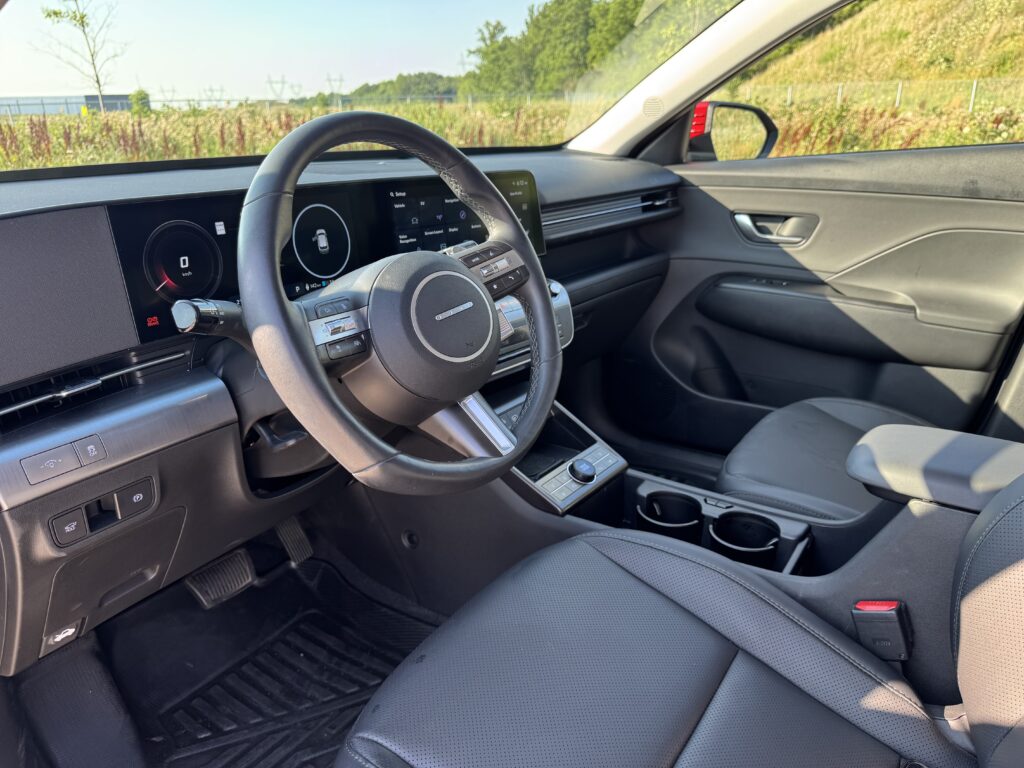

On the Road: Heavy in the Best Way
The driving experience surprised me. The Kona Electric doesn’t feel like a featherweight urban runabout. It feels substantial. It corners confidently, stays planted at highway speeds, and gives you just enough EV torque to make on-ramps fun — even if it doesn’t quite slap you back in your seat like some other electrics I’ve tested.
The steering is tight, the ride is composed, and the cabin stays relatively quiet, even with the AC cranked. Also worth noting: this EV doesn’t scream “eco car.” It just feels like a well-balanced, refined compact crossover — with a bonus electric powertrain.
On the Road: Heavy in the Best Way
The driving experience surprised me. The Kona Electric doesn’t feel like a featherweight urban runabout. It feels substantial. It corners confidently, stays planted at highway speeds, and gives you just enough EV torque to make on-ramps fun — even if it doesn’t quite slap you back in your seat like some other electrics I’ve tested.
The steering is tight, the ride is composed, and the cabin stays relatively quiet, even with the AC cranked. Also worth noting: this EV doesn’t scream “eco car.” It just feels like a well-balanced, refined compact crossover — with a bonus electric powertrain.
Equipment and Trims: Simple, Once You Get It
The 2025 Kona Electric is only offered in Front-Wheel Drive (FWD) and exclusively in the Preferred trim, but Hyundai lets you layer on optional packages that elevate the experience:
- Trend Package: Adds power sunroof, ambient lighting, upgraded wheels, and dual-zone climate.
- Ultimate Package: Includes ventilated front seats, larger display, upgraded navigation, premium audio, and more safety tech.
- N-Line Ultimate: Gives you sportier aesthetics, unique wheels, N-Line badging, and red interior accents for a more aggressive vibe.
When building on CarCostCanada, the trim levels are tied into these packages directly — so what initially seems like a confusing style matrix becomes crystal clear once you see the pricing and features bundled.
Hockey Bags & Heated Everything
As a Canadian, I’ll always appreciate a smart power liftgate — especially when lugging my hockey bag and sticks. Hyundai’s foot-swipe tailgate function is surprisingly responsive and works even if you’re holding your coffee in one hand and your dignity in the other.
Heated steering wheel and seats? Standard. Hyundai clearly listened to Canadians who don’t want to freeze for the first 10 minutes of their commute. It’s the little things that earn loyalty.
The column gear shifter takes a moment to get used to, but after a few drives, it becomes second nature — and frees up centre console space for storage and cupholders.
The Competition: Who Else Is in the Ring?
If you’re looking at the Kona Electric (approx. $50,000–$53,500 CAD including freight and air tax), you’re probably cross-shopping it with:
- Chevrolet Bolt EUV – Slightly cheaper, similar size, and very capable — but Chevy has announced it’s retiring the Bolt (again), so availability may be limited.
- Nissan Leaf SV Plus – Still relevant but aging fast; shorter range and dated design.
- Kia Niro EV – Possibly the Kona’s toughest rival. Similar powertrain (same Hyundai group), slick design, and slightly more cargo flexibility.
Final Thoughts
The 2025 Hyundai Kona Electric is a practical, stylish, and well-executed entry into Canada’s still-growing EV market. It’s not perfect — and no, you can’t yet charge it at every Tesla station in the country — but it hits most of the right notes for urban commuters and suburban families looking to make the switch.
If you’re still holding out on going electric because of charging fears, take a breath. With 420 km of range, intelligent navigation to charging stations, and a driving experience that feels anything but compromised, the Kona Electric just might be your gateway EV.
And hey — if it can handle a summer heatwave and a hockey bag, it’s already halfway to being a great Canadian car.
James Matthews is the President, General Manager and Co-Founder of LeaseBusters. James launched LeaseBusters in 1990 and is considered one of Canada’s leading experts on new vehicle leases, lease-take-overs and vehicle lease (re)marketing. James can be reached directly at jmatthews at leasebusters.co

